Then and now: fascinating photographs of America’s Old West
A look back at America's frontier
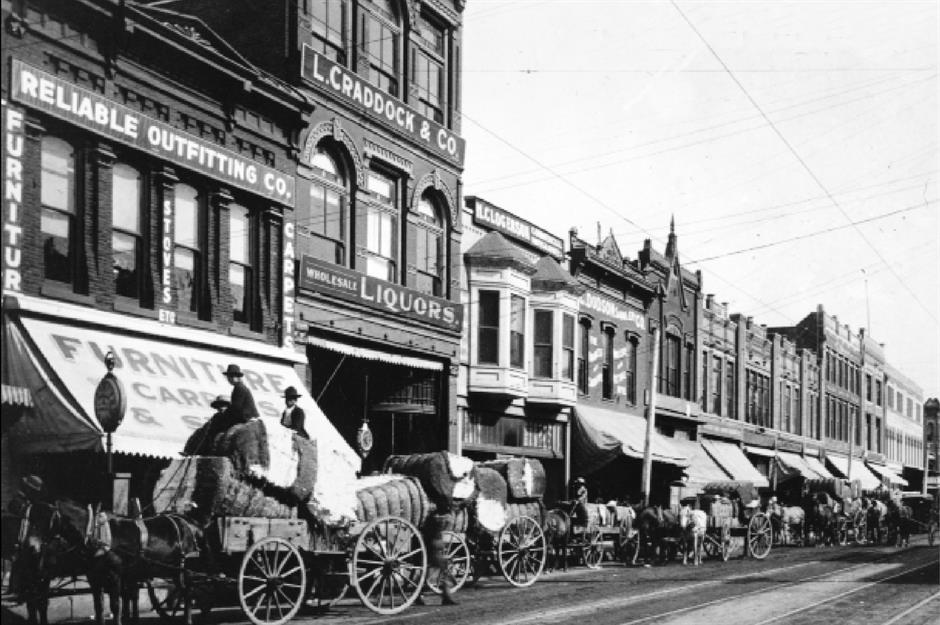
From railroads in Utah to the Arizona desert and the Great Plains around Wichita, America's Old West remains fascinating to this day. In Vaughan Grylls' book The Old West Then and Now, the country's historical towns are showcased in beautiful vintage photographs, spanning from 1856 to 1907, alongside modern images of what was once America's frontier.
Then: Tucson, Arizona

Founded in 1775 by Hugo O'Connor, an aristocratic Catholic Irishman who escaped British persecution of well-known Catholic families, Tucson is home to the impressive Presidio San Agustin del Tucson fort. By 1857, the desert town had become an essential base for the San Antonio to San Diego Mail Line. Pictured here is the Southern Pacific Railroad's roundhouse in 1890, where trains were rotated 180 degrees to head back to the southwest.
Now: Tucson, Arizona
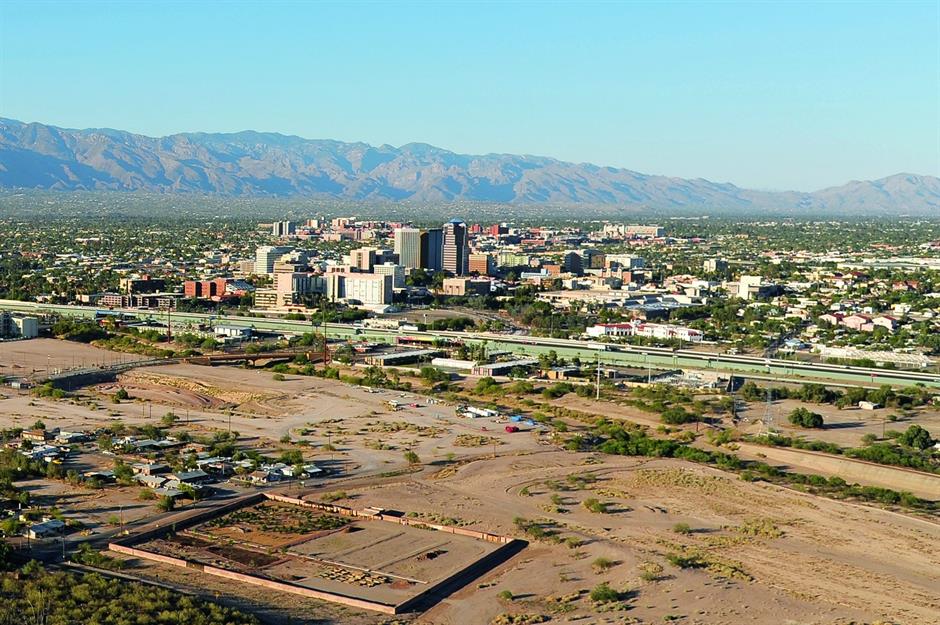
Nowadays, not only do the old fort and railroad still exist but Tucson has developed into a busy city, home to the University of Arizona and the Davis-Monthan Air Force Base. Thanks to these institutions, the area has established itself as a centre for high-tech companies. In this photograph, the city's downtown can be seen sitting at the foot of the Santa Catalina mountain range.
Then: Phoenix, Arizona
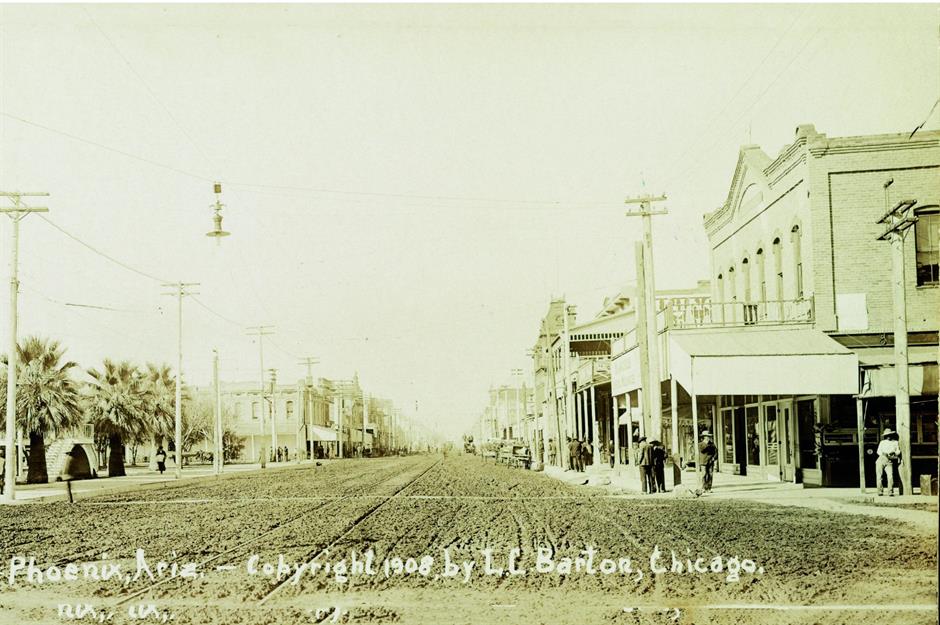
When Jack Swilling, a Confederate Civil War veteran, and Phillip Darrell Duppa established a farming community in a sunny valley in 1867, Duppa decided to name it after the mythical bird known for rising from ashes. In 1870, Phoenix was built in a grid system on top of the remains of a 300-mile-long (480km) canal system, first dug by an ancient Indigenous tribe. Photographed here is Phoenix's Washing Street in 1908, when the city was already the capital of Arizona.
Now: Phoenix, Arizona
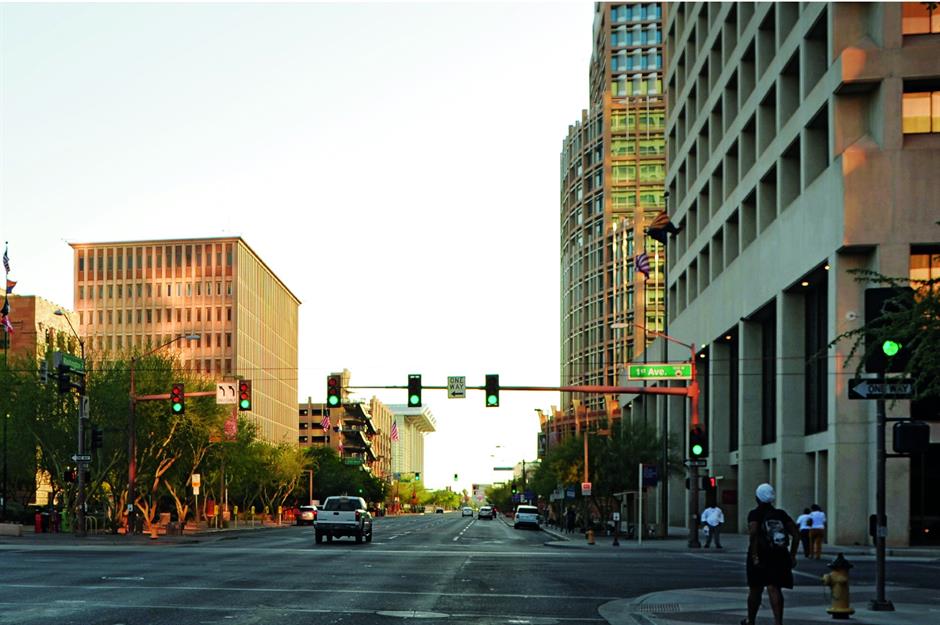
Since its foundation, Phoenix has gained more than four million residents, with air conditioning making life in the hot Arizona summer much easier. Unfortunately, it's for the same reason that all the original buildings from back in the day have been replaced by more modern structures.
Love this? Check out our Facebook page for more travel inspiration
Then: Prescott, Arizona

As Arizona's first permanent capital, Prescott quickly earned a Wild West reputation thanks to frequent violent encounters between local Indigenous tribes and settlers looking for fortunes in gold and silver mining. The town quickly grew to become the capital of Arizona until it was replaced by Tucson in 1867. Prescott briefly enjoyed the honour again in 1877 until Phoenix was named the new capital in 1889, still holding the title to this day.
Now: Prescott, Arizona

When visiting Prescott nowadays, guests can spot many buildings from the Old West period, preserved by the National Register of Historic Places. One of the most impressive is the state's first governor's mansion, located on Gurley Street. In the background of the picture, you can spot Thumb Butte, a popular local hiking destination.
Discover amazing Arizona's awesome attractions
Top
Then: Salt Lake City, Utah

Salt Lake City was designed by Mormon founder Joseph Smith, who claimed it was the new Garden of Eden. After Smith's murder in 1844, Mormon leader Brigham Young honoured him by starting work on the city in 1847. The city was divided into 10-acre blocks, with each acre given to a pioneer family for settling and farming. Captured here in 1890 is the city before the famous Salt Lake Temple was completed. The photograph was taken from Ensign Peak, where masses took place regularly.
Now: Salt Lake City, Utah

Utah's capital since 1856, Salt Lake City now boasts high rises such as the State Capitol building, which is 285 feet high (89m), and several tall religious structures. This photograph also showcases the 20-mile-long (30km) Sunset Avenue, located smack bang in the centre of the city.
Then: Promontory Summit, Utah
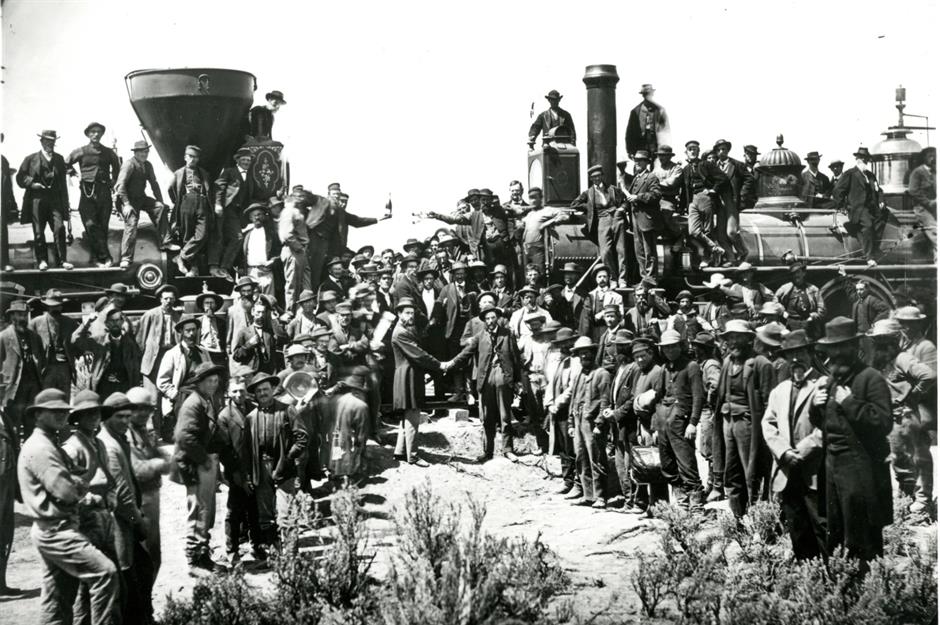
This photograph, taken in 1869, shows the monumental moment the first transcontinental railroad was joined at Promontory Summit in Utah. Also called the 'Wedding of the Rails', the tracks connected the Atlantic coast to the Pacific. A collaboration between Union Pacific and Central Pacific, the 1,176-mile-long (1,892km) railroad crossed deserts, gorges, mountains and rivers, and made reaching the West much easier for travellers.
These are the big adventures you should experience in southern Utah
Now: Promontory Summit, Utah
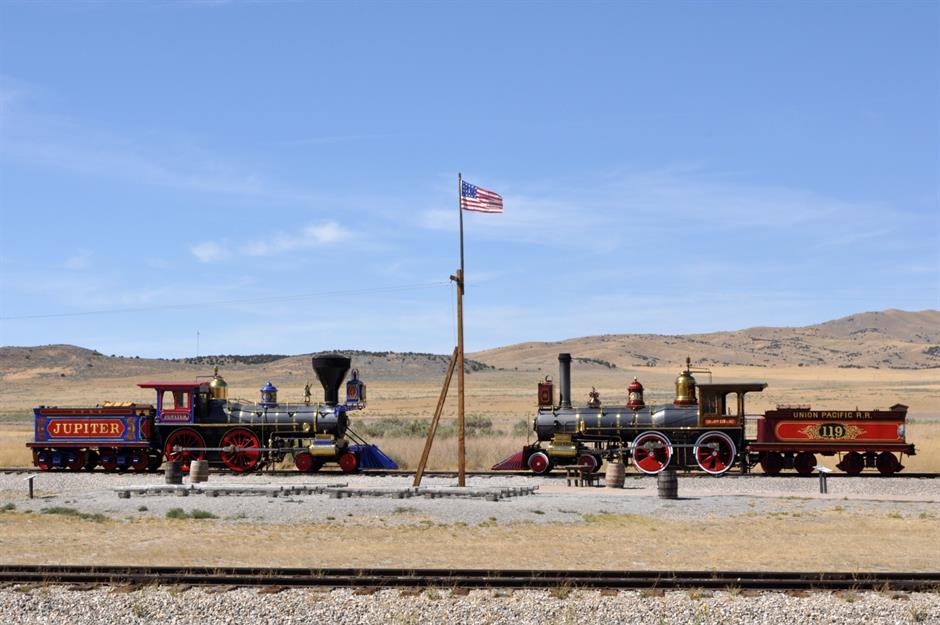
Nowadays, the event's location is called the Golden Spike National Historical Park and can be easily visited, although it is no longer used for passenger or freight trains. During the summer months, replicas of the original engines can be seen driving along 1.7 miles (2.7km) of maintained track.
Then: Goldfield, Nevada

When gold was first discovered here in 1903, Goldfield quickly grew to become the largest town in Nevada over the following three years. More than 20,000 people settled in the area, and, as seen in this photograph, it was a real Old West town with cowboys strolling the streets. The stunning Morena Ridge mountain range sits in the backdrop of this 1905 image.
Now: Goldfield, Nevada
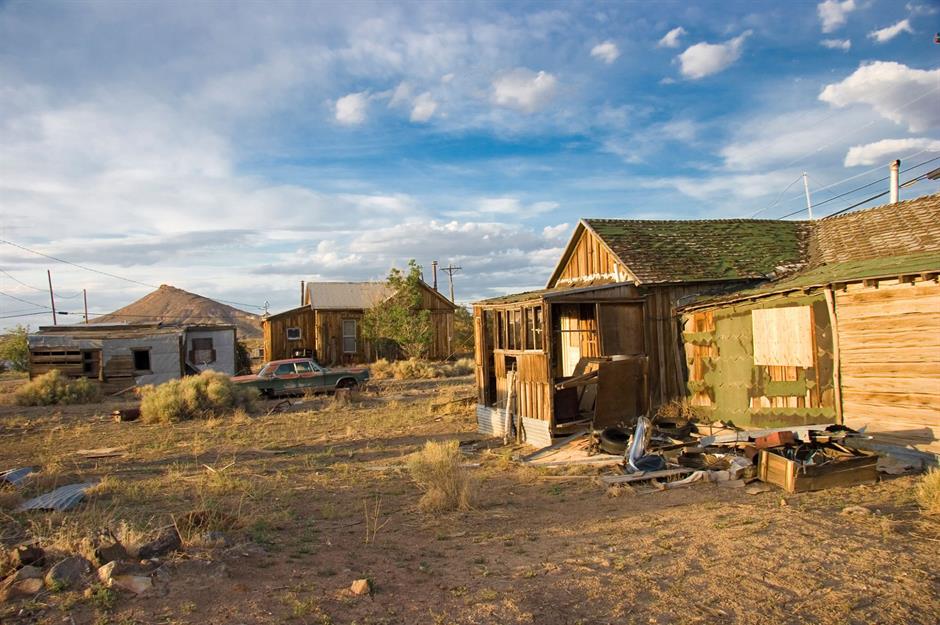
Unfortunately, Goldfield was soon left with little to none of its previous resource, and in 1923 was destroyed by a fire. Today, fewer than 300 people remain in the town, which is largely abandoned. Luckily, some buildings have been preserved by the Goldfield Historic District, such as the old Goldfield Hotel.
Then: Dallas, Texas
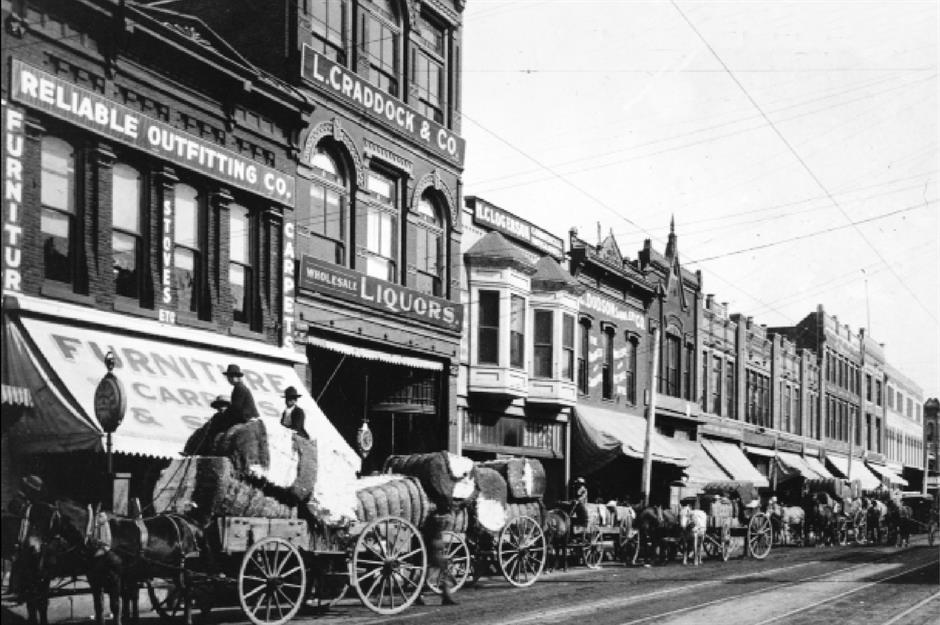
Initially considered a trading post, Dallas was permanently founded in 1841 by John Neely Bryan, and by 1844 blocks and streets had been created on a 0.5-square-mile (1.3sq km) area. In the surrounding region natural river fords protected the town, while the Preston Trail, an important north-south route created in the same year as Dallas, ran nearby. In 1860, many of the historic buildings in the city's business district were destroyed by a fire. Pictured here is Elm Street, Dallas' bustling main street with saloons and shops.
Now: Dallas, Texas
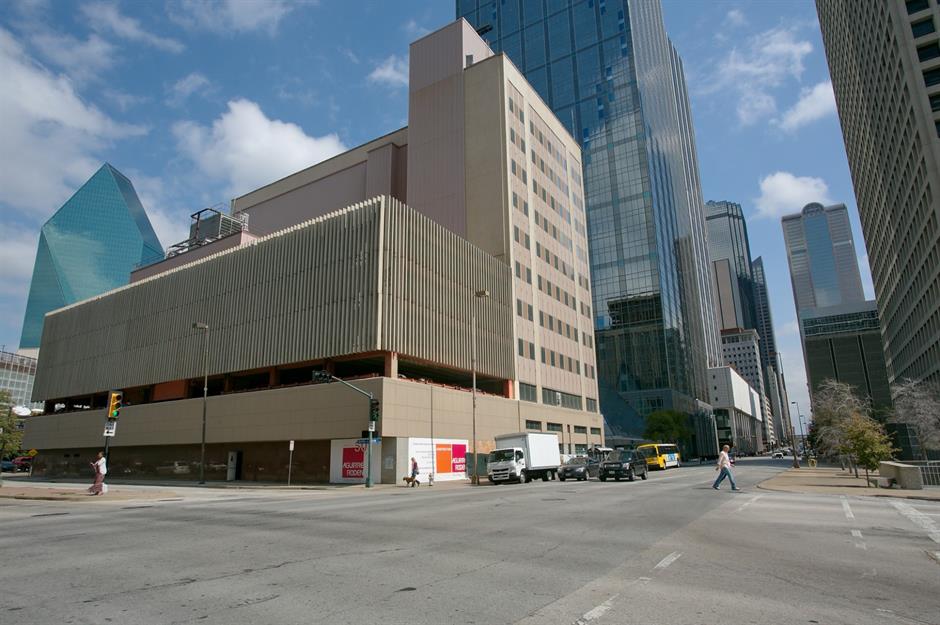
The street has become infamous for being the site of President John F. Kennedy's assassination in 1963, in front of the Texas School Book Depository. Later, in the 1990s, Dallas became the centre of the growing telecom industry, and was known as Texas' Silicon Valley or 'Silicon Prairie'.
Then: Denver, Colorado

Founded in 1858 as a gold-mining town close to the Rocky Mountains, Denver quickly ran out of gold and developed into a mining supply hub instead. After becoming the county seat of Arapahoe County, the rapidly growing town was named state capital in 1867. With important rail lines running through the city, Denver became a centre for transportation, processing and shipping minerals and ranch products.
Now: Denver, Colorado
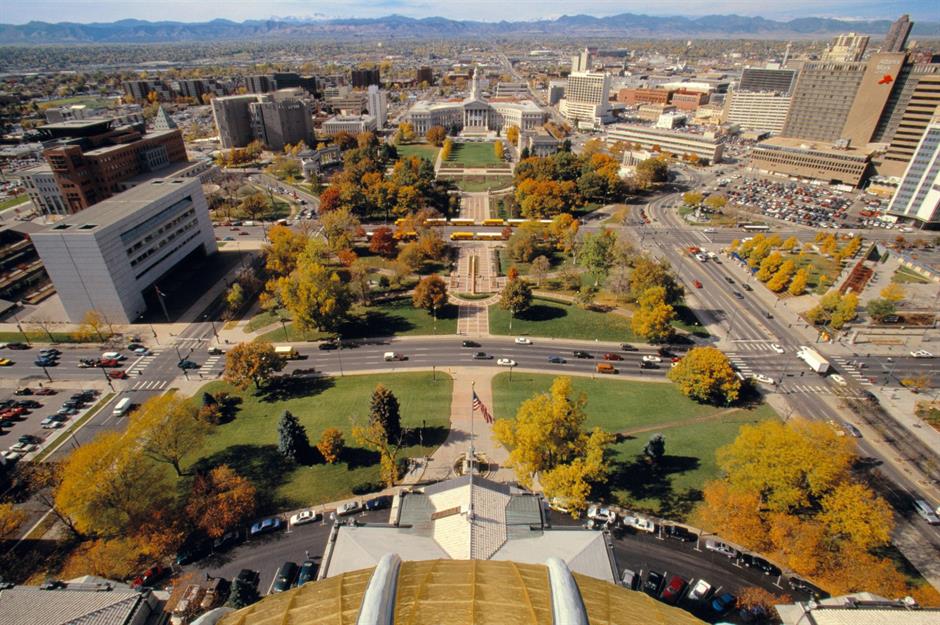
In recent decades Denver has become home to many oil and gas companies, resulting in the construction of several skyscrapers in the city's downtown. These industries pushed Denver to expand even more quickly, developing from a small urban town with rural farms to a busy metropolis. Since the 1990s, the city has focused on key industries such as energy, financial services, healthcare and tourism.
Here are 14 reasons Colorado should be your next American adventure
Then: Deadwood, South Dakota

When gold was found in the northern Black Hills in South Dakota, settlers moved there quickly, eventually founding Deadwood. The town played by its own rules and was filled with outlaws and gamblers alongside the gold seekers. Dance halls, saloons, brothels and gambling sites flourished on both sides of Main Street, giving this area of Deadwood the nickname 'Bad Lands'.
Now: Deadwood, South Carolina
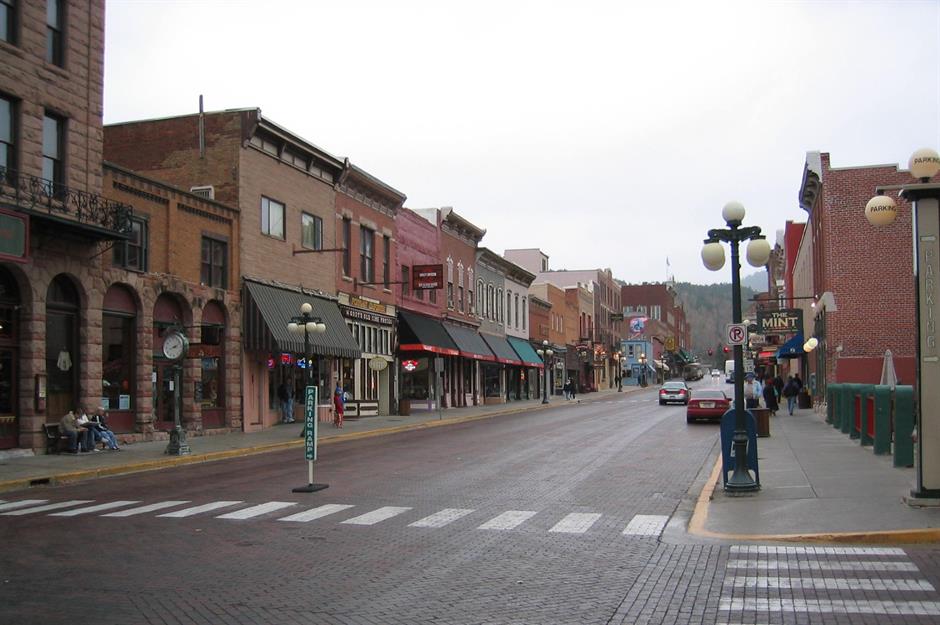
Deadwood nearly became another Old West ghost town, surviving not only numerous economic hardships but also three devastating fires. Thanks to limited-wage gambling being legalised in 1989, the city was able to recover and bloom once again. Nowadays, visitors can find casinos, resort hotels, popular clubs and spas in this historic town.
Then: Meridian, Mississippi
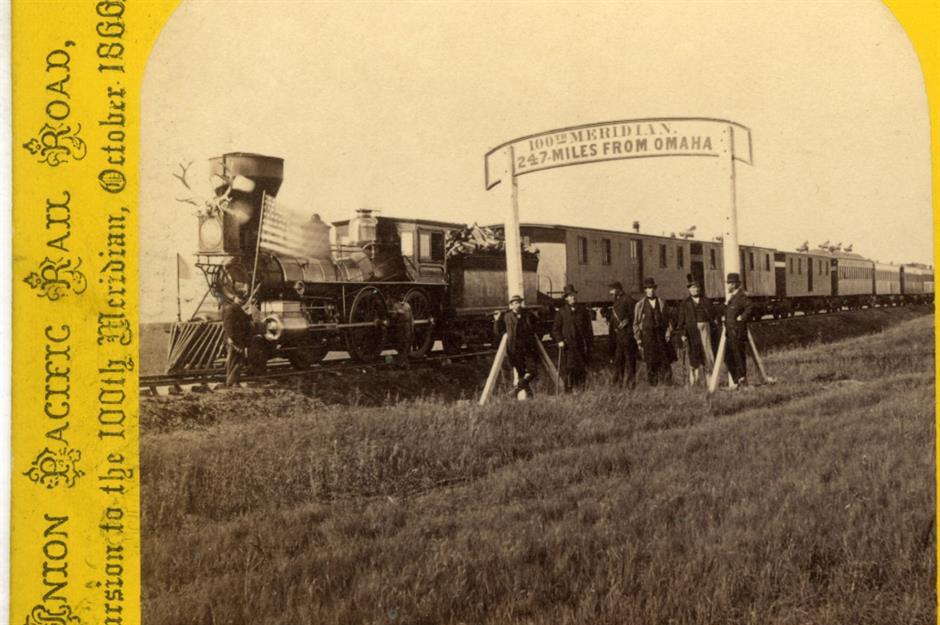
Originally settled by Choctaw Indians, the land around Meridian was bought by the United States in 1830 and in the following years grew steadily around the Ohio Railroad and the Southern Railway of Mississippi. Its mainly rail-based economy came to a halt when the city was torched during the Civil War. But between 1890 and 1930, the town entered its 'Golden Age', becoming the largest city in Mississippi and a manufacturing centre for the region.
Now: Meridian, Mississippi
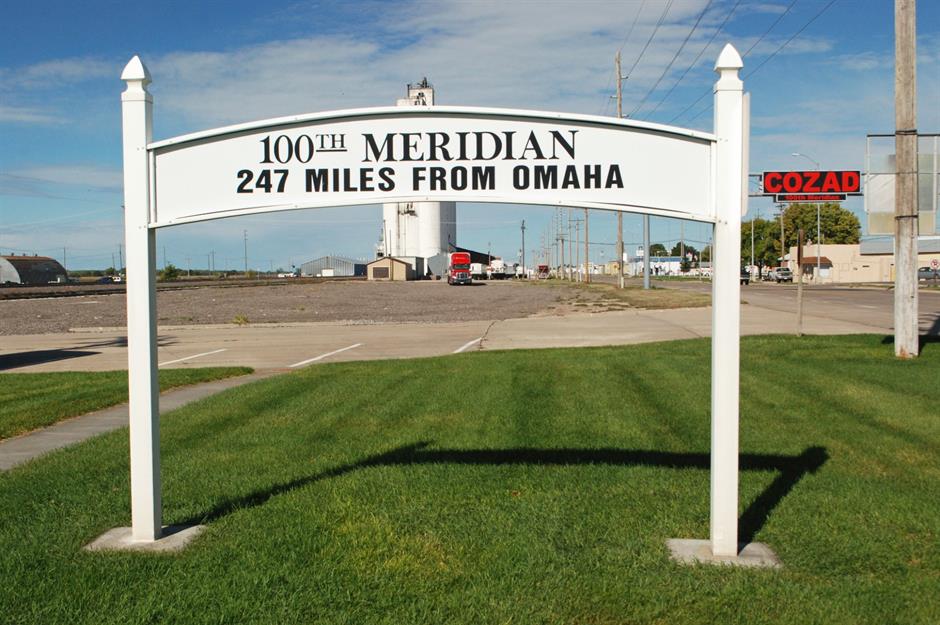
In the 1950s, the city slowly declined alongside the railroad industry, and with the economy faltering people relocated to larger cities in search of employment and opportunity. In recent years Meridian has attempted to revitalise itself, inviting businesses and industries to resettle in the area.
Then: Wichita, Kansas

First established as a trading post in the 1860s by pioneer trader Jesse Chisholm, Wichita quickly developed into a city as more businesses arrived in the area. By 1890, the Old West town had become one of the largest cities in Kansas. Wichita continued to grow as oil and gas were discovered nearby in 1914, and producers opened their headquarters and stores in the booming region.
Now: Wichita, Kansas
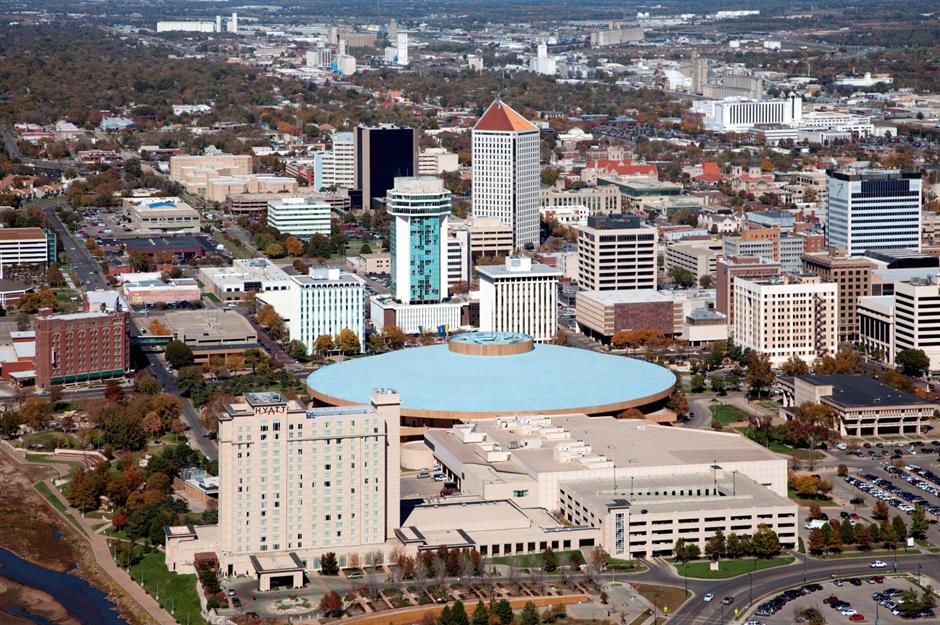
Wichita experienced a slow period in the 1970s, but revitalised its downtown and older neighbourhoods in the 1990s and early 2000s. Recently the city has focused on aircraft manufacturing, earning the nickname 'Air Capital of the World'. One major aircraft player, Boeing, left Wichita in 2014, but the city remains a centre for the industry with important companies like Airbus and Spirit AeroSystems continuing their operations.
Then: Nebraska City, Nebraska

Nebraska City started with the construction of a ferry house in the 1850s, built by John Boulware and his father with plans to expand their river-crossing and ferry service. The city thrived thanks to steamboats on the Missouri River bringing business, people and freight to the area. This ideal location ensured that Nebraska City established itself as a regional centre for transportation, agriculture and other industries.
Now: Nebraska City, Nebraska
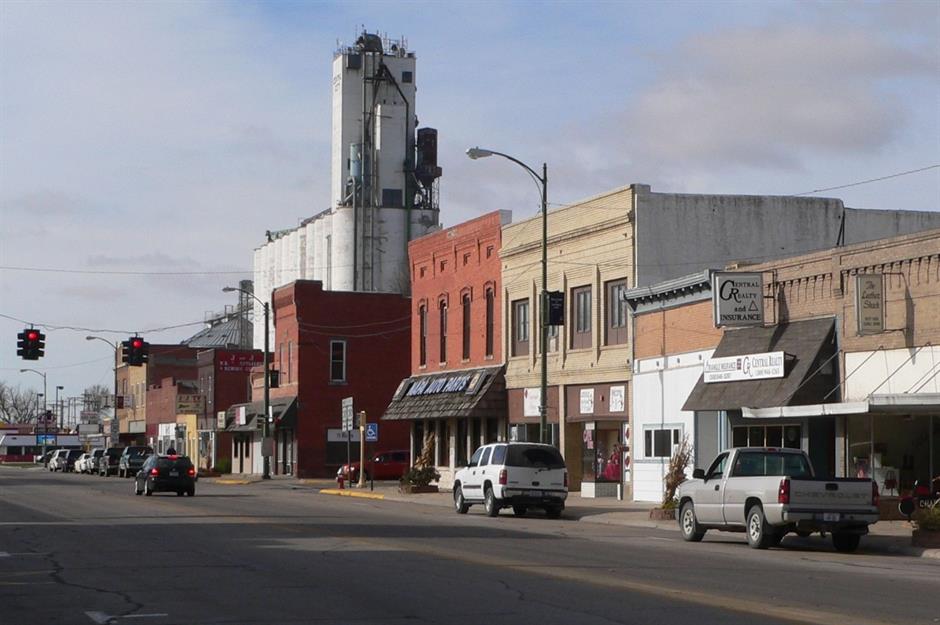
Nowadays, Nebraska City is largely known as 'The Home of Arbor Day', a day that celebrates the planting of trees, and was founded by J. Sterling Morton, who served as US Secretary of Agriculture and lived in Arbor Lodge in the town's centre. To this day, the National Arbor Day Foundation's headquarters remain near Morton's home. Agriculture and the Missouri River continue to be the core of Nebraska City's economy.
Find out more
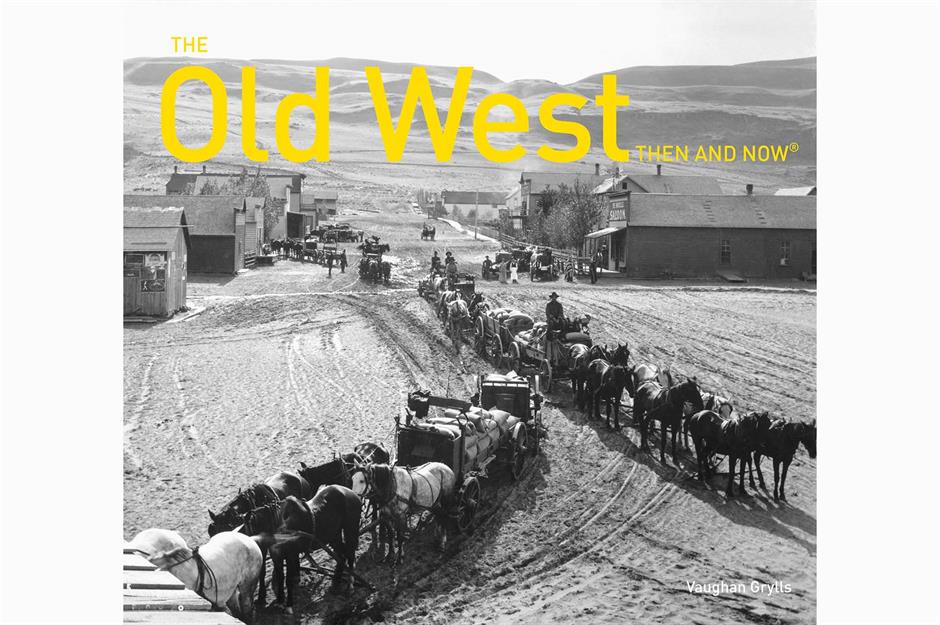
All images were taken with permission from The Old West Then and Now by Vaughan Grylls, published by Pavilion.
Now take a look at incredible vintage photos of the world's most famous landmarks
Top
TopIncredible vintage photos of the world's most famous landmark
TopIncredible vintage photos of the world's most famous landmarks
Comments
Be the first to comment
Do you want to comment on this article? You need to be signed in for this feature